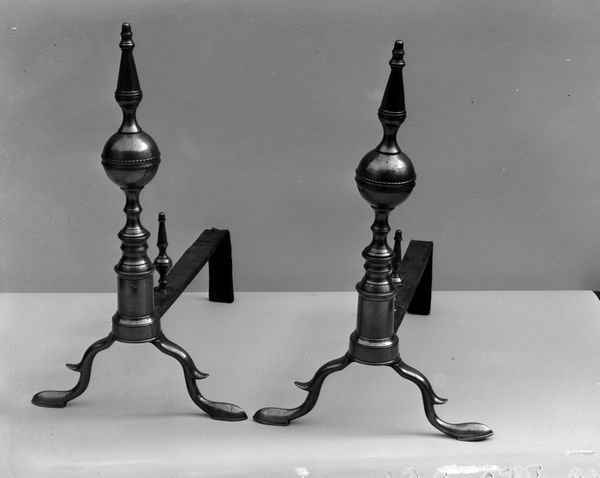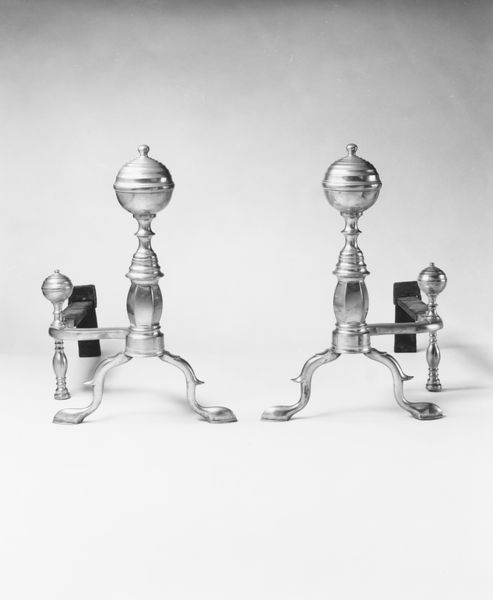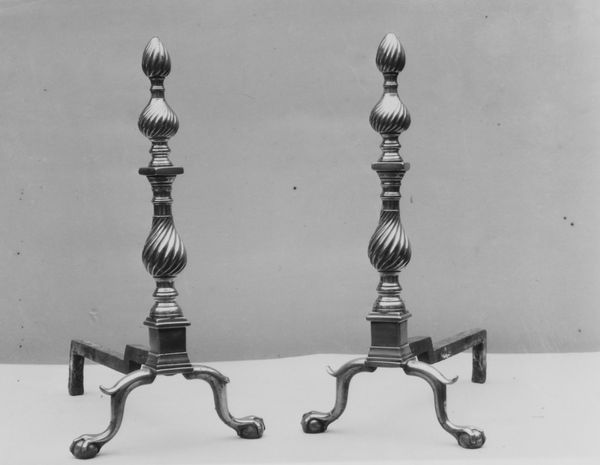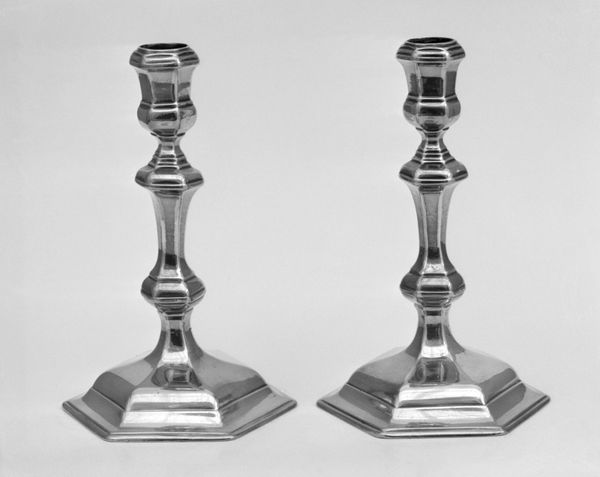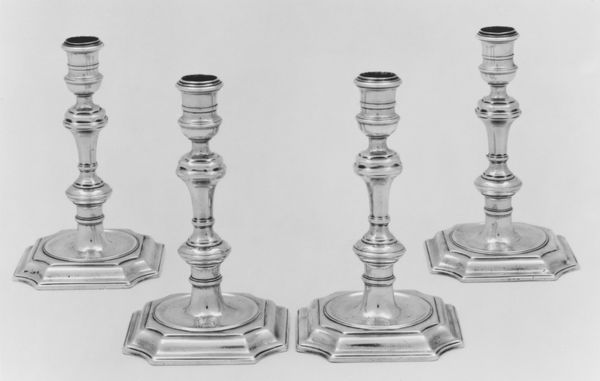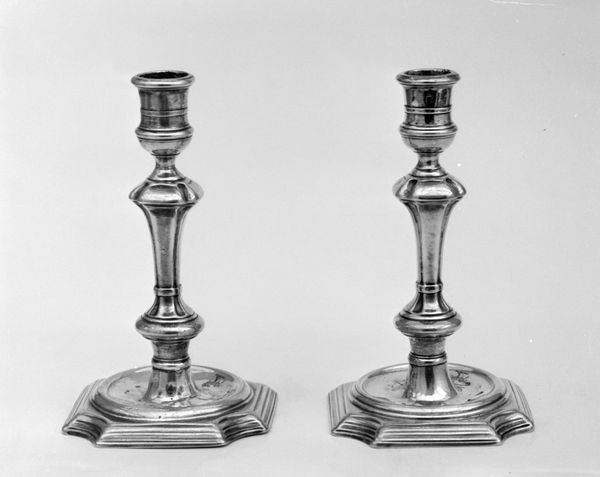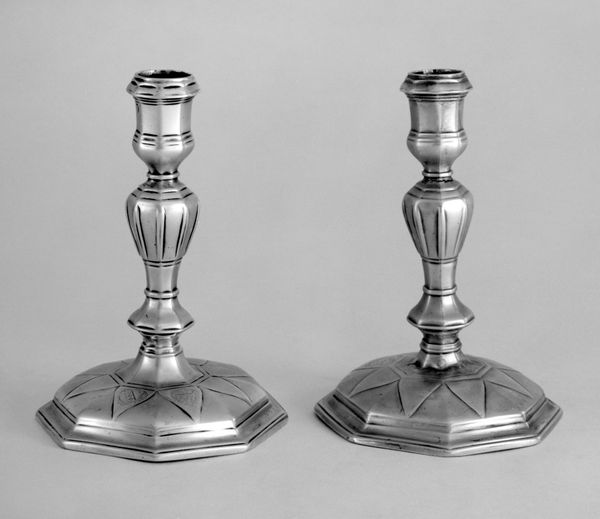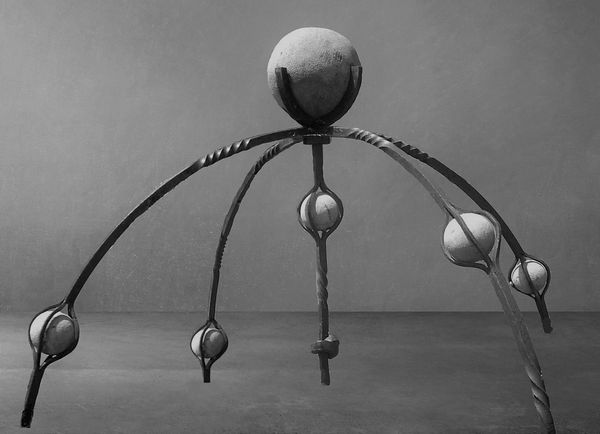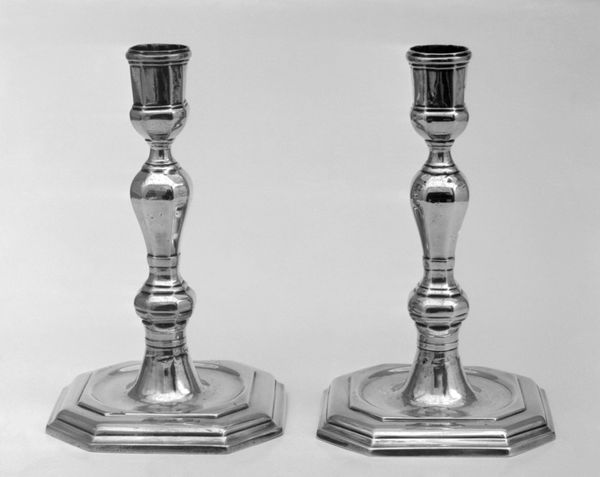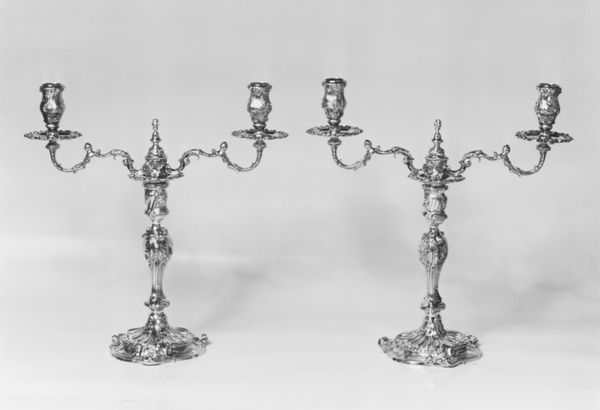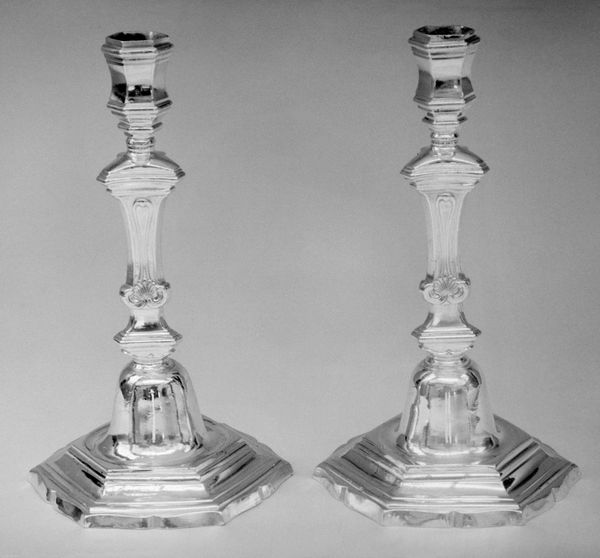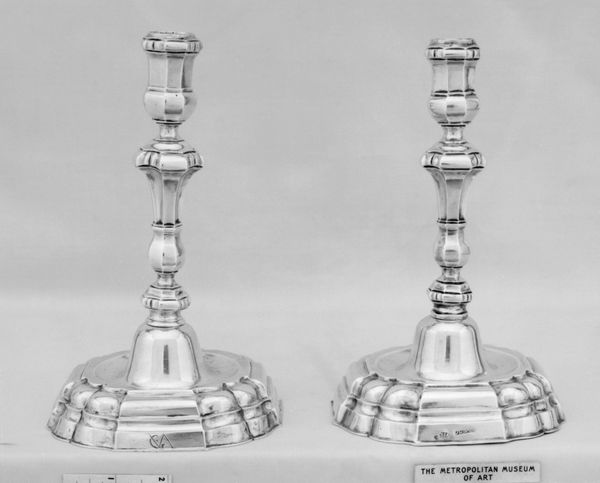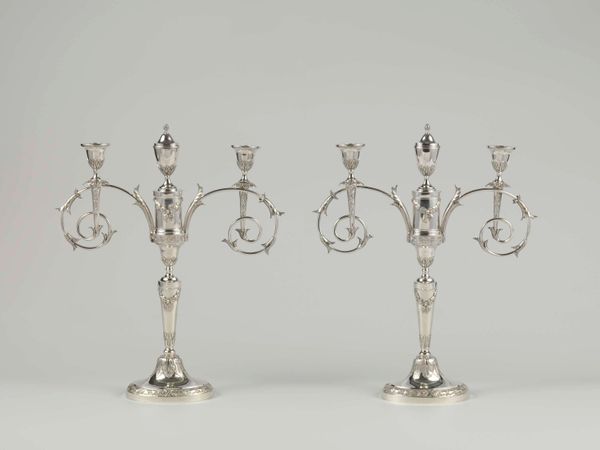
carving, metal, sculpture
#
neoclacissism
#
carving
#
metal
#
sculpture
#
geometric
#
sculpture
#
decorative-art
Dimensions: 22 5/8 x 10 3/4 x 20 1/2 in. (57.5 x 27.3 x 52.1 cm)
Copyright: Public Domain
Curator: Before us stand a pair of andirons, dating from around 1797 to 1800. These pieces of decorative art are currently held in the collection of the Metropolitan Museum of Art. Editor: They look cold. Stark and elegant, yes, but they lack any feeling of warmth. That metal just radiates austerity. Curator: Austerity was very much in vogue at the time. These andirons embody Neoclassicism, reflecting a desire to return to the perceived purity and order of ancient Greece and Rome. It’s all about geometric shapes and simplified forms, turning functional objects into miniature sculptures. Editor: Functional objects elevated into art. But consider, who would have even had these in their homes? This is decorative art for the wealthy, during a period of immense social inequality and upheaval with revolution in the air, quite literally as Europe wars. Are these expressions of power? The gleaming surfaces a not-so-subtle reminder of privilege? Curator: They certainly speak to status. Having the means to not only own but embellish even the most mundane objects broadcasts wealth and sophistication. The decorative-art style during this period had everything to do with class display, you see. But focusing on that is not all: look closely at how the maker, Richard Wittingham, balances functionality with the era’s aesthetic aspirations. Editor: It is an act of design that reveals a lot. Perhaps too easily we forget those beyond the drawing rooms where the art eventually settled, from metalworkers and carvers. Consider too the wood constantly burnt atop these tools: the enslaved from many nations labored so this elite could afford its fire...it can give an uncanny atmosphere knowing all of it now. Curator: They are far from mere aesthetic pieces; they are a product of intricate socio-economic networks. As they stand here on display, divorced from their original context, they pose silent but insistent questions about power, class, and artistry. Editor: Absolutely. To reflect on decorative objects of past elite society pushes for necessary perspective. And I think that shift of focus and intent can turn even a cold object into a call to action.
Comments
No comments
Be the first to comment and join the conversation on the ultimate creative platform.
